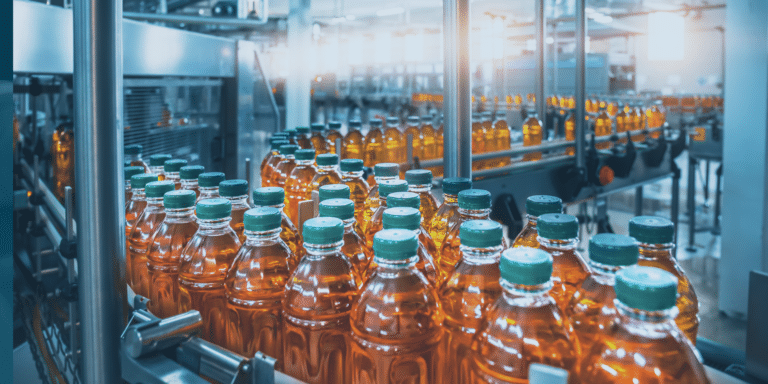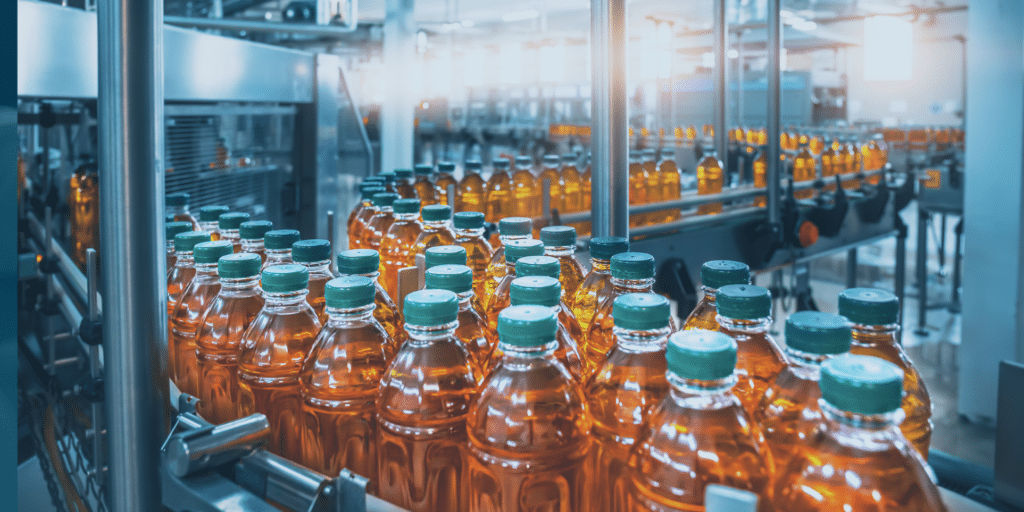
From harvest to hands, the food & beverage (F&B) industry leaves no room for guesswork, especially without supply chain optimization software. This reality is compelling F&B companies to rethink their strategies and approach to supply chain optimization and demand planning. Staying competitive in this intense landscape demands finely tuned operations that are highly efficient and effective – from product concept to customer consumption.
The time is ripe to move forward with supply chain transformation. With the combination of advanced inventory management, modern demand planning, and a finely sales and operations process, F&B businesses can navigate fluctuating customer demands, stringent regulations, and a steady flow of new product launches. In this article, we will cover examples and key factors that push businesses to build that supply chain resilience they need.
Planting the Seeds of Resilience
Most companies understand that accurate forecasts are critical to minimizing inventory, maximizing production efficiency, streamlining purchasing, optimizing distribution, minimizing waste, and projecting future performance confidently. However, creating a market-driven demand plan that people in different business areas and roles can use to develop individual operating strategies can be challenging.
The key to creating an effective market-driven demand plan is access to rich forecasts based on inputs from multiple sources. With AI-powered capabilities, F&B companies can collaborate and negotiate with a fact-based sales and operations planning (S&OP) foundation and keen visibility across the global supply chain network to pivot quickly when new opportunities and risks arise. They can automatically generate forecasts with real time insights at any defined business level – from sales and marketing to logistics and financials – by applying the following capabilities across the product’s lifecycle:
Advanced inventory management
As one of the most visible supply chain expenses, inventory movement depends on customer service levels, supply chain design, and product quality. Excellence in all these areas requires predicting demand, buying supplies, producing products promptly, and swiftly responding to market demand. Otherwise, inventory positions can become misaligned, leading to suboptimal revenue generation and needless waste.
An advanced inventory planning solution automatically determines the proper inventory control parameters for each SKU or location combination, leading to improved customer service with less inventory investment.
Companies can also effectively measure the trade-off between specific inventory investments and desired customer service levels. Simulating and analyzing various inventory strategies across a broad spectrum of customers, products, and distribution centers allows decision-makers to consider the impact of market factors, such as seasonality, promotions, and newly introduced products.
“We’ve got capabilities that we brought to market recently that apply a more stochastic replenishment planning approach. And we’ve seen some recent results there with service level improvements ranging from 9 – 25%. And that’s pretty astonishing. That’s why companies are moving to these newer technologies so quickly—because they see the benefit.” Lisa Henriott, SVP at Logility, on inventory in the Supply Chain Connect Podcast, “Innovation Destination”
Time-phased replenishment planning
Demand planning and optimization can take supply chain planning to a higher level by accurately projecting future demand, supply, and inventory levels to create a realistic picture of supplier and material requirements. However, as retailers and grocers expect food suppliers to manage inventory at their sites and guarantee a rapid replenishment cycle, AI-enabled planning tools and analytics are necessary to maintain high service levels and minimize costs.
By adopting AI technology that supports time-phased replenishment planning, F&B companies can quickly consider the effects of inventory investment, service levels, and current orders and commitments. They can evaluate inventory from multiple perspectives, including actual demand data, future distribution needs, and replenishment commitments. Advanced probabilistic safety stock calculation methods can also be leveraged to minimize inventory investments and create time-phased replenishment orders.

Demand-based manufacturing
In some supply chains, manufacturing facilities operate independently. Unfortunately, those focusing on maximizing outputs as efficiently as possible risk producing batch sizes that exceed actual customer demand.
The optimal approach to manufacturing planning is leveraging demand, inventory, and replenishment plans to synchronize how much product should be produced to minimize cost while meeting customer service goals. Facilities can subsequently develop capacity plans and detailed schedules that respect manufacturing constraints, optimize changeovers, and harmonize inventory of finished goods and raw materials with demand.
Manufacturing demand sensing technology can combine multi-plant planning with the detail of single-plant scheduling to:
- Develop capacity plans and detailed schedules that respect manufacturing constraints, optimize changeovers
- Go beyond shop order sequencing by updating released orders based on real-time demand signals, enabling proactive adjustments to consumption, netting, and safety stock policies.
- Track and manage shelf-life across all stages (on-hand, planned, incoming) for raw materials, intermediates, and finished goods, minimizing waste and ensuring product freshness.
Sales and operations planning automation
While manufacturing planning helps a company balance supply and demand in the near term, S&OP processes align that equilibrium with corporate financial goals across longer-term tactical and strategic time horizons. Then, F&B businesses can transform diverse information from sales, production, finance, marketing, transportation, and procurement into one comprehensive business plan.
With a complete S&OP solution, days or weeks can be eliminated from the planning process. By automating the planning cycle and completing multi-divisional analysis in a fraction of the time, companies can compare multiple business scenarios, evaluate critical strategies, and prepare contingency plans to avoid risk and respond to market dynamics.
By identifying misalignments and problems early, S&OP processes can ascertain the right time to staff an additional shift, add new equipment, build new facilities, develop new partnerships, launch new products, and enter new markets. Data used in the S&OP process are then aggregated to help executives determine trade-offs between business alternatives.
Sowing resilience with predictive capabilities
Hostess Brands is a prime example: an American-based bakery company’s store-level inventory management underwent a massive transformation with leveraging AI-adoption in supply chain optimization software and shifted to a store-managed approach rather than central control. This change significantly enhanced operational efficiency and cost control.
This food and beverage brand’s sales team generates a high-level forecast and integrates it into Logility supply chain optimization solutions for further refinement. To ensure synchronization, the supply chain team then formulates a baseline statistical forecast that aligns the demand plan with supply orders.
Forecast accuracy tracking at Hostess now operates within a hierarchical structure, monitoring accuracy at the SKU level and using weighted mean absolute percentage error (MAPE) as a benchmark against plan-to-order strategies. Given the accelerated inventory turnover amid rising demand volatility, weekly forecasts for the immediate three weeks are scrutinized more. Meanwhile, long-term planning spans 18 months, encompassing known seasonal programs and new items to facilitate strategic decisions on labor, capacity, and capital allocation.
Additionally, display items, treated as made-to-order, boast a 20-day lead time, aiding in the synchronization of bakery production and distribution without excess inventory. Some items, categorized as everyday items, carry a seven-day lead time, ensuring consistent availability to fill display orders. Longer-term forecasts drive these processes and play a critical role in inventory management and capacity planning. The sales team also generates near-term forecasts for display items to address specific programs.
Looking ahead, Hostess anticipates transformative innovations, including expansions into food service, schools, international markets, and in-store bakery segments. Although each new sector introduces unique complexities impacting forecasting, planning, and product distribution strategies, Hostess is ready to take the leap with the visibility to adapt and the flexibility to innovate an entirely new supply chain model.
Bringing to life the ingredients for success
The key factors build supply chain resilience they need involve AI-enriched supply chain optimization software capabilities like automation in sales and operations planning, a modern approach to increased forecast accuracy, and sophisticated inventory management. Now is the opportune moment for progress and sustained growth.
And as the industry continues to evolve with supply chain optimization software, F&B companies can sow the seeds of resilience to define the future of their enduring success with responsive, efficient, and customer-centric supply chains.
Explore the possibilities of increased productivity with GenAI
In this demo video, we show how Logility GenAI has transformed the AI conversation. Seeing is believing. GenAI in Action
Watch Now


